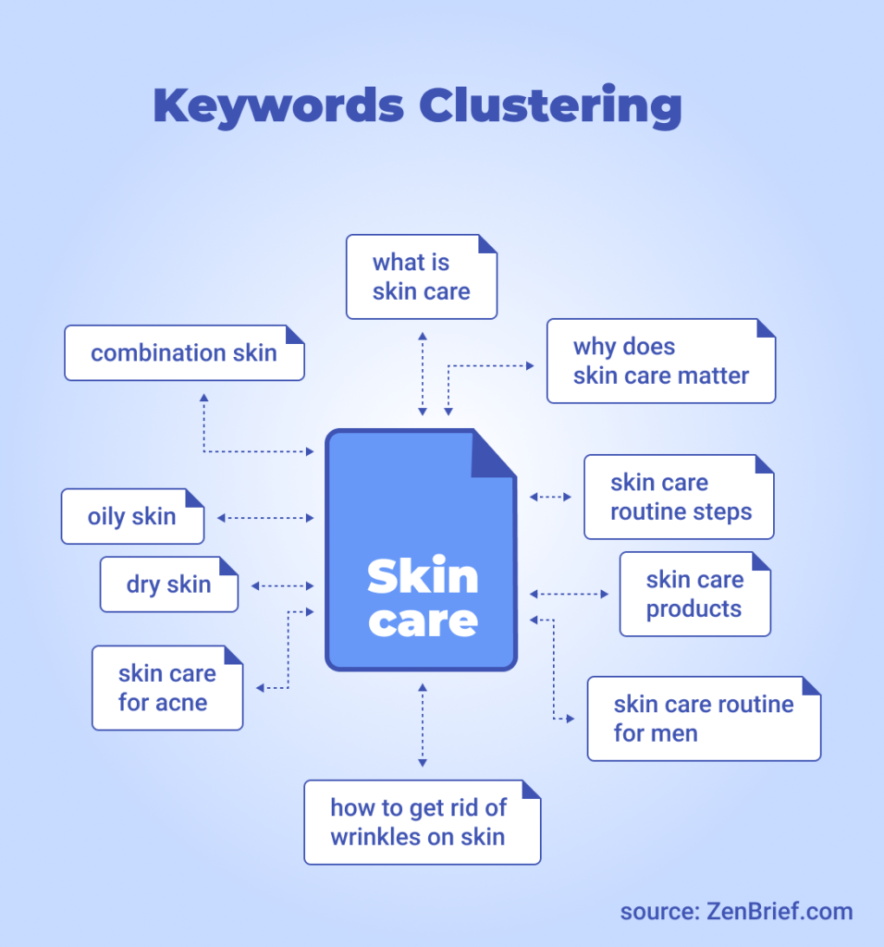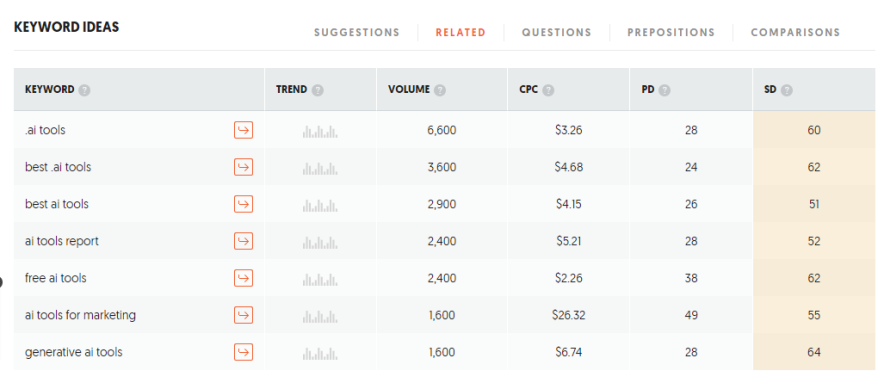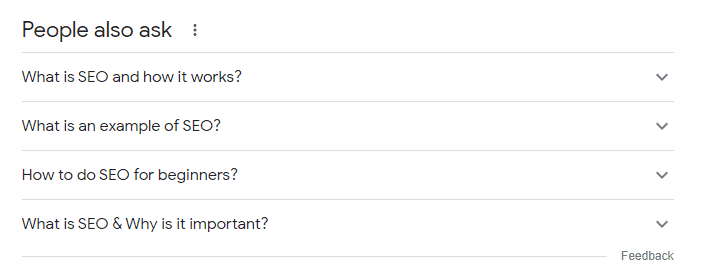The way we search and get information online is constantly evolving, and so is SEO. Gone are the days of simply stuffing keywords into content and hoping for the best. Today, search engines like Google prioritize meaningful, relevant, and high-quality content that truly caters to the user’s intent. This is where semantic SEO comes in.
Search engines like Google have become smarter than ever, relying on semantic understanding to rank web pages.
Gone are the days when you could rank by filling in the same keywords over and over again.
Keyword stuffing is not only outdated, but it can also backfire, hurting your search rankings and user experience.
This is where semantic SEO comes into play, as it goes beyond traditional keyword-focused optimization.
In this post, you will learn what semantic search is, its benefits, and how to use it to improve your search rankings. Let’s get into the details.
What is Semantic SEO?
Semantic SEO involves optimizing your content for a topic rather than a primary keyword or phrase.
This means you will create topic-focused content instead of targeting a single keyword. You will create in-depth content that answers user questions related to that topic.
Semantic SEO mostly involves using related keywords and synonyms instead of exact match keywords. Simply put, you will optimize your content not for keywords, but for MEANING.
Here are some benefits of semantic SEO:
- Better search engine rankings for your target topics (or keyword phrases)
- High engagement and long dwell time
- Attract highly targeted visitors from Google
- Better topical authority and much more
- better user experience
So, how do you apply semantic analysis SEO to future-proof your SEO strategy? let’s find out.
Top 6 Ways to Use Semantic SEO For Better Rankings In 2024

1. Optimize for Keyword Clusters
Keyword clusters are groups of related keywords that share the same search intent (or meaning).
For example, people searching for “Bluetooth headphones” and “wireless headphones” are likely looking for the same product, but with different keyword phrases. Therefore, search engines prioritize the meaning (or intent) behind a search query when ranking pages rather than keywords.
That’s why keyword clustering is important in semantic SEO: users can search for the same topic in different ways.
So, your job is to find all the relevant keyword phrases with similar intent for your topic.
Here is an example of keyword clustering (Source: ZenBrief.com)

As you can see above, “skin care” is the main topic, and all the other keywords around it are keyword clusters that share the same intent.
We’ve written a detailed guide on how to do keyword clustering, so be sure to check it out.
2. Use Synonyms & Related Terms for Optimization
You need to go beyond “broad words” regarding semantic optimization.
To expand your keyword research, you need to identify synonyms, alternative phrases, and semantically related words.
Here are some tools you can use to find related keyword terms and synonyms;
- Semrush
- Ubersuggest
- AnswerThePublic
Here’s an example of related keyword terms for the broad keyword “AI tools” (using Ubersuggest);

As you can see above, our examples above are semantically related to broad keywords.
Similarly, you can use any of the keyword tools to find alternative keyword phrases to your broader topic (or keywords) to optimize your content for semantic SEO.
You can also use tools like LSIgraph and Google’s “Related Searches” feature to identify keyword terms related to your primary keyword.
Here’s an example of an LSI keyword for “do it yourself.”

As you can see above, you can find semantically related keywords for any topic.
Remember, synonyms and related words improve the semantic value of your content, which ultimately results in better user experience and search traffic.
Here is the ultimate beginner’s guide to organic SEO to improve your website’s organic visibility.
3. Answer “People Also Ask” Questions In Your Content
One of Google’s powerful free tools is “People Also Ask” questions.
“People Also Ask” (PAA) sections on Google search results pages are a goldmine for content creators.
They reveal searchers’ questions about your target topic.
Integrating those questions into your content is the best way to implement semantic SEO.
So, how do you integrate PAA questions into your content? Here are some proven tips for you.
Identify relevant PAA questions: Use the “People also ask” section on Google for your target keyword or topic.
Here’s what it looks like;

Include naturally: Once you’ve identified those questions, integrate them naturally into your content. Use the FAQ section (we do the same for most of our blog posts). Whether you’re creating a blog post or page, you can use the FAQ section to answer PAA questions.
Provide appropriate answers: Provide clear, concise, and informative answers that address the intent of the question. If you’re using FAQ sections to answer those questions, keep them short – don’t write long answers. Always keep beginners in mind while answering such questions.
Use headings and subheadings: It’s also a good idea to embed some of those questions in your subheadings. Use the Table of Contents box to display all your subtitles, including the H2 and H3 tags.
Update regularly: Keep an eye on the PAA queries for your top performing posts, as Google keeps changing them according to users’ interest. So, update those evolving PAA questions and keep your content fresh and relevant.
Bottom-line? Find and integrate those “people also ask” questions when creating your future blog posts.
Quick note: If you’re running a larger website, here’s a free guide on using enterprise SEO to drive more organic traffic to your sites.
4. Comprehensive Content Coverage
Once keyword research is complete, address the topic thoroughly.
You need to explore subtopics, variations, and related concepts.
For example, instead of covering just “dog training,” cover “puppy training,” “leash training,” “dog behavior problems,” etc.
The whole purpose of semantic optimization is to provide users with new concepts that are closely related to the original query (or topic).
So, how do you make your content comprehensive?
Understand the intention behind your topic (or search query). Then, create a detailed outline that addresses specific needs and questions.
Also, establish your expertise whenever possible.
For example, when we talk about increasing website search traffic, we often share our blog traffic reports like this;

Do you know why we included those reports?
This way you can establish credibility and improve SEO with EAT signals.
Whenever possible, show credibility in your content. Google gives top priority to content created by experts. It believes that searchers are interested in reading content created by experts.
Use your author biography and about page to demonstrate your authority. Build links from relevant and authoritative websites to improve your site’s domain authority. All of these things add up when it comes to improving your site’s rankings.
5. Optimize Your Content Naturally
Once you’ve identified synonyms, related words, and question keywords, sprinkle those keywords naturally into your content.
Remember this mantra: “Write for humans, optimize for search engines.”
Use your keywords in different ways, such as:
- Main text content
- Subheadings
- Metadata (title tags, meta descriptions)
- Image captions and ALT tags
- URL and more
Avoid keyword stuffing at all costs. it does not work anymore. You should prioritize quality and readability over excessive keyword stuffing. Reader experience is more important than keywords.
Also, internal linking plays a huge role. Don’t forget to connect relevant pages. Use appropriate anchor text when linking to other relevant pages on your website.
Are you looking for more traffic from Pinterest? Here are some of the best Pinterest SEO tips to get the most out of the platform.
6. Pillar-Cluster Content Structure
Once the writing part is complete, you need to organize the topics properly.
Be sure to create comprehensive pillar pages with supporting cluster content.
Here’s an excellent example of a topic group structure (Source: SEMrush);

Want a live example?
We have published a guide on “SEO Tutorial for Beginners”, which is a pillar page.
At the end of the page, we have carefully added all the relevant cluster pages that are semantically related to each other.
have a look;

As you can see above, each link will redirect to their respective individual cluster pages.
In short, this is how it works:
- Pillar Pages (these are your final posts and in-depth guides covering the broader topic)
- Cluster content (these are your supporting articles, individual blog posts discussing specific subtopics related to the pillar page)
- Adding columns and clusters (now, you just need to connect internal links to the columns page pointing to the relevant clustered content)
Are you getting it?
With topic groups and column pages, you’ll see better search rankings. Why? Search engines like Google prefer organized content. Plus, your website users will get all the relevant information in one place.
Do you want to build links and rank for competitive keywords? Then, try the Parasite SEO strategy that works well for specific sites.
A Quick Checklist for Semantic Keyword Optimization
Here’s a handy checklist you can use to optimize your content for semantic searches.
- Use keyword tools like SEMrush or Ubersuggest to identify semantically related keywords. Analyze those keywords and group them into groups based on topic, intent, and user queries.
- Analyze the top-ranking pages for your chosen keyword groups. This way, you will understand what type of content Google prefers for your target topic.
- Organize your content with clear headings covering all key subtopics. If you’re creating detailed content, use lots of bullet points and images.
- Make a list of all the PAA (people also ask) questions that you can include in your content. Use the FAQ section to answer those questions. Also, use free tools like Answer the Public and AlsoAsked.com to find relevant questions about your topic.
- Be sure to link to relevant pages internally. This way you can link your content to other relevant pages on your website.
- Avoid keyword stuffing at all costs. Sprinkle relevant words naturally throughout your content. You can use tools like Surfer SEO to optimize your content.
- Above all, audit your high-performing content regularly (quarterly or semiannually) and keep your content fresh and relevant to maintain high rankings.
- Use rank-tracking tools to track your keyword rankings and make necessary changes to your content based on performance.
Do you want to get more traffic from mobile? Learn these secret mobile SEO techniques for free.
FAQs on What Is Semantic SEO
Here are some frequently asked questions about semantic keywords.
How does semantic search impact SEO?
This helps search engines like Google to provide useful results for different keyword terms with similar intent. Ultimately, searchers will benefit, as they are more likely to find what they are looking for on your website.
What is an example of a semantic search?
Instead of searching “best vegetarian restaurants,” you ask Google, “Where can I find pure vegetarian restaurants near me?” – This is a semantic search in action because both keyword phrases have the same meaning.
Is semantic SEO the best way to optimize your content in 2024?
Yes, semantic SEO is optimizing your content not just for keywords, but for meaning (intent). This is a future-proof way to improve your content rankings.
Does keyword research play a role in semantic analysis?
Yes. But, you should avoid traditional keyword research. Search for topics instead of plain keywords. Semantic analysis mainly involves answering all the user queries about a specific topic.
What are the best tools to find semantically related keywords?
Here are a few keyword tools you can use;
- Semrush keyword magic
- LSI Graph
- Ubersuggest
Final Thoughts on Semantic Analysis SEO
Semantic keyword optimization is the way to go in 2024. Instead of targeting keywords, you’ll go after topics and user intent. You’ll also cover a wide range of relevant terms, and focus on answering users’ questions.
What do you think about semantic search engine optimization? Did you find this guide useful? Let us know your thoughts in the comments.
